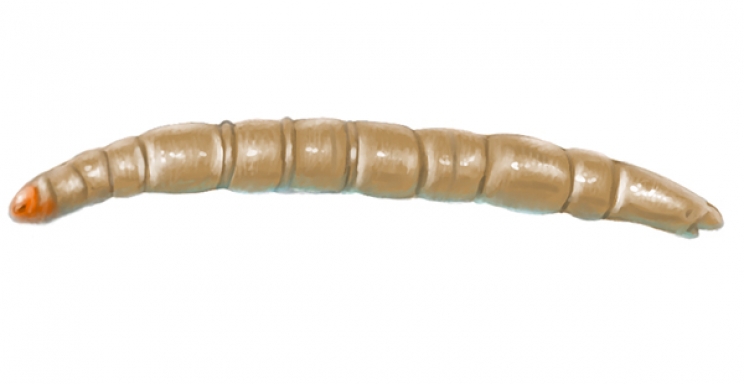The article describes a new species of dipteran (the group of insects that includes flies, mosquitoes, and horseflies, among others) named Protoanisolarva juarezi. The species was previously unknown to science, and is based on extremely well-preserved specimen found in Cala d'Estellencs, located in the northwest of Mallorca island. The scientific name of the species means 'Juárez's primitive anisopodoid larva', in honour of Josep Juárez, who found the fossil during some prospecting work.
The specimen preserves the external and internal structure of the head, some parts of the digestive system, and the spiracles (small holes that allow air in and out through the body's surface) of the respiratory system . The research team emphasizes that the presence of this respiratory system that is still present in different groups of extant insects evidence some of the adaptations of early dipteran insects to the environment of the early Triassic, a few million years after the Permian-Triassic mass extinction event. This catastrophic global event, also known as "The Great Dying", caused the vanishing of about 80-95% of all species living on Earth due to an atmosphere very poor in oxygen and the acidification of the oceans caused by huge volcanic eruptions.
During the Middle Triassic period, the Earth was very different from now. Most mases of land were grouped together in the supercontinent of Pangea, and Mallorca was located in an area near the equator of this landmass. The larva of Protoanisolarva juarezi would have lived in a habitat of large rivers and flooded areas, in a climate similar to the alternating dry and rainy seasons found nowadays in tropical Africa.
Rafel Matamales, curator of the Museu Balear de Ciències Naturals (FJBS-MBCN, Sóller), took part in this research while he was completing his doctoral thesis at the Institut Català de Paleontologia Miquel Crusafont (ICP). Additionally, the research team included Enrique Peñalver (Instituto Geológico y Minero de España, IGME-CSIC), André Nel (Muséum national d'Histoire naturelle, CNRS, Sorbonne Université), and Ricardo Pérez (Oxford University Museum of Natural History).
Main image: recreation of the appearance of Protoanisolarva juarezi. Roc Olivé / © Institut Català de Paleontologia Miquel Crusafont. With the collaboration of Fundación Española para la Ciencia y la Tecnología – Ministerio de Economía, Industria y Competitividad.
Article reference:
- Peñalver, E., Matamales-Andreu, R., Nel, A., & Pérez-de la Fuente, R. (2022). Early adaptations of true flies (Diptera) to moist and aquatic continental environments. Papers in Palaeontology, 8, e1472. https://doi.org/10.1002/spp2.1472















